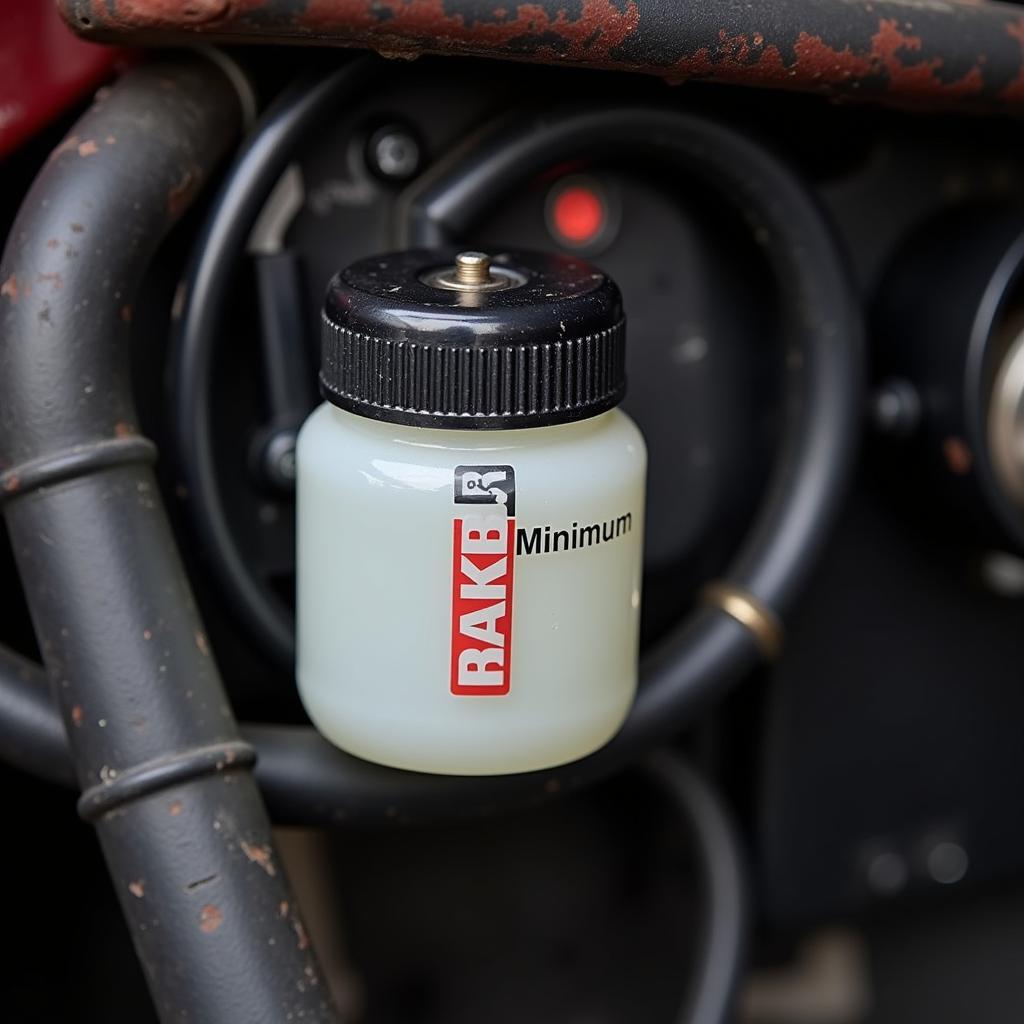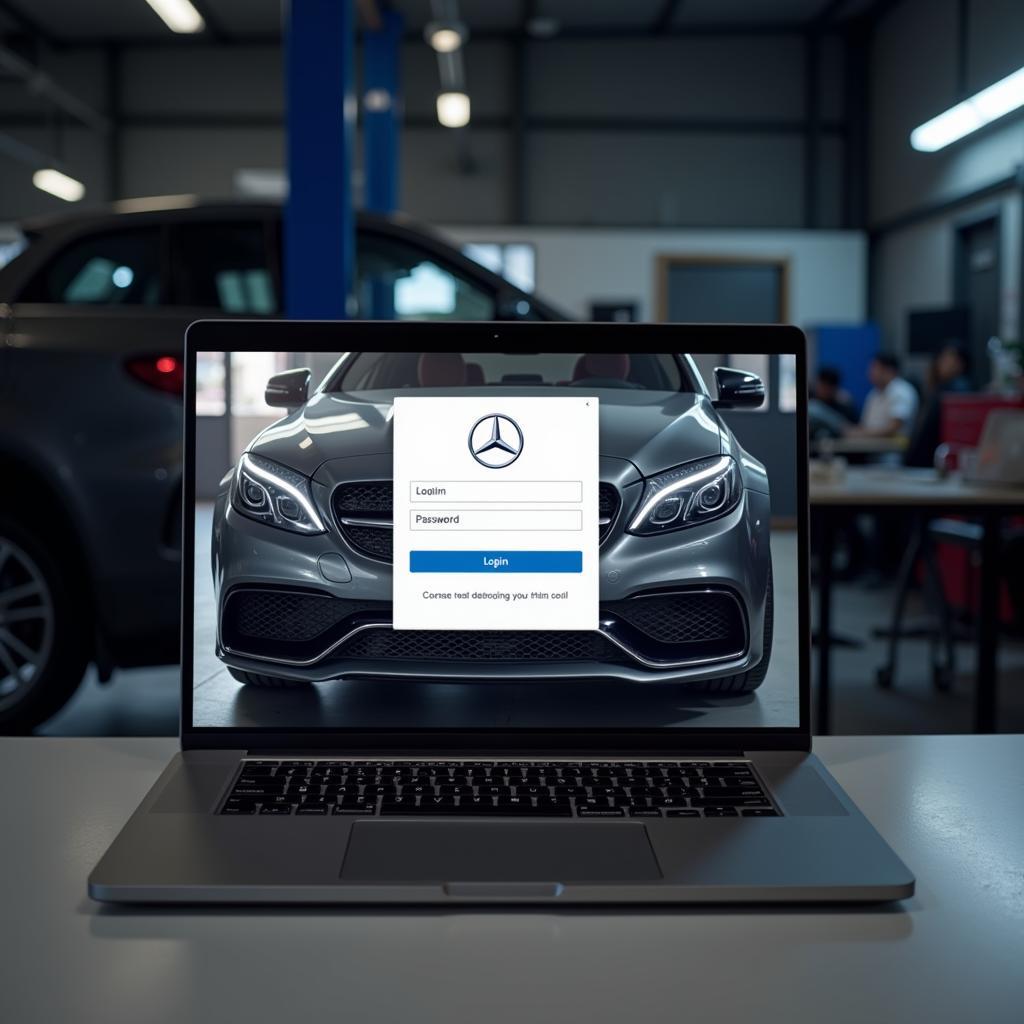The Rover 75 brake warning light is a crucial safety feature that alerts you to potential problems within your braking system. Ignoring this warning light could jeopardize your safety and the well-being of other road users. This comprehensive guide explores the common causes behind the Rover 75 brake warning light illuminating and provides insights into diagnosing and addressing the underlying issues.
Understanding Your Rover 75’s Brake System
Before delving into the causes of a lit brake warning light, it’s essential to understand the basic components of your Rover 75’s braking system:
- Hydraulic System: This system utilizes brake fluid to transmit force from the brake pedal to the wheels, enabling the car to slow down or stop.
- Brake Pads and Discs: These components generate friction against the brake rotors when you press the brake pedal, slowing the vehicle’s wheels.
- Brake Fluid Reservoir: This reservoir holds the brake fluid, and a sensor within it monitors the fluid level.
- Brake Warning Light System: This system includes sensors that monitor various aspects of the braking system, including brake fluid level, brake pad wear, and the electronic brake force distribution (EBD) system.
Common Causes of a Rover 75 Brake Warning Light
The brake warning light on your Rover 75 can be triggered by several issues:
- Low Brake Fluid: This is one of the most frequent causes. A leak in the brake lines or worn-out brake pads reducing the fluid level can activate the warning light.
- Worn Brake Pads: Your Rover 75 is equipped with a wear sensor in the brake pads. When the pads wear down to a certain point, the sensor triggers the warning light, indicating the need for replacement.
- Faulty Brake Light Switch: The brake light switch activates the brake lights when you press the pedal. A malfunctioning switch can confuse the system and trigger the brake warning light.
- ABS Sensor Issue: The Anti-lock Braking System (ABS) sensor monitors wheel speed and helps prevent wheel lockup during braking. A faulty ABS sensor can disrupt this system, illuminating the warning light.
- Hydraulic System Problems: Leaks or air in the hydraulic system can reduce braking efficiency and trigger the warning light.
- Electronic Brake Force Distribution (EBD) Fault: The EBD system optimizes braking force distribution to each wheel. A fault in this system can trigger the warning light.
 Rover 75 Brake Fluid Reservoir
Rover 75 Brake Fluid Reservoir
Diagnosing the Problem
When your Rover 75’s brake warning light illuminates, it’s crucial to diagnose the underlying issue promptly. Here’s a step-by-step guide:
-
Check Brake Fluid Level: Safely park your vehicle and allow the engine to cool. Open the hood and locate the brake fluid reservoir. Visually inspect the fluid level. If it’s below the minimum mark, add the correct type of brake fluid recommended for your Rover 75.
-
Inspect for Leaks: Carefully examine the area around the brake master cylinder, brake lines, and calipers for any signs of fluid leaks. Look for wet spots or drips. If you suspect a leak, it’s essential to address it immediately.
-
Check Brake Pads: Visually inspect the brake pads through the spaces between the wheel spokes. If you have experience, you can remove a wheel to get a closer look. Look for significant wear and tear. Thin brake pads require immediate replacement.
-
Consult a Professional: If you’re unable to pinpoint the cause of the brake warning light or if the problem persists after addressing the common issues above, it’s crucial to consult a qualified mechanic specializing in Rover vehicles.
Remote Diagnostic and Programming Services for Your Rover 75
In today’s technologically advanced automotive landscape, remote diagnostic and programming services offer a convenient and efficient way to address certain brake system issues in your Rover 75. These services can often diagnose the root cause of the problem by accessing the vehicle’s onboard computer and retrieving diagnostic trouble codes. In some instances, they may be able to remotely reprogram certain modules, potentially resolving the issue without the need for a physical visit to a workshop.
[Expert Insight] “Remote diagnostics have revolutionized the way we approach car repairs. By accessing the vehicle’s computer remotely, we can often pinpoint issues with the ABS, EBD, and other electronic components of the brake system,” says John Miller, Senior Automotive Diagnostician at CarDiagTech.
Preventing Future Issues
Taking preventative measures can help you avoid encountering brake warning light issues in the future:
- Regular Maintenance: Adhere to your Rover 75’s recommended maintenance schedule, which includes regular brake inspections and fluid flushes.
- Quality Parts: Always use high-quality brake pads, rotors, and fluids that meet the specifications of your vehicle.
- Timely Repairs: Address any brake-related concerns promptly, as delaying repairs can lead to more significant problems.
Conclusion
A glowing brake warning light in your Rover 75 should never be ignored. By understanding the potential causes and following the diagnostic steps outlined in this guide, you can take the necessary steps to ensure your safety and the optimal performance of your vehicle. Remember, when in doubt, always consult a qualified mechanic specialized in Rover vehicles to accurately diagnose and address any brake-related concerns. For issues potentially related to the car’s electronic systems, exploring remote diagnostic services can be a time-saving and effective approach.


